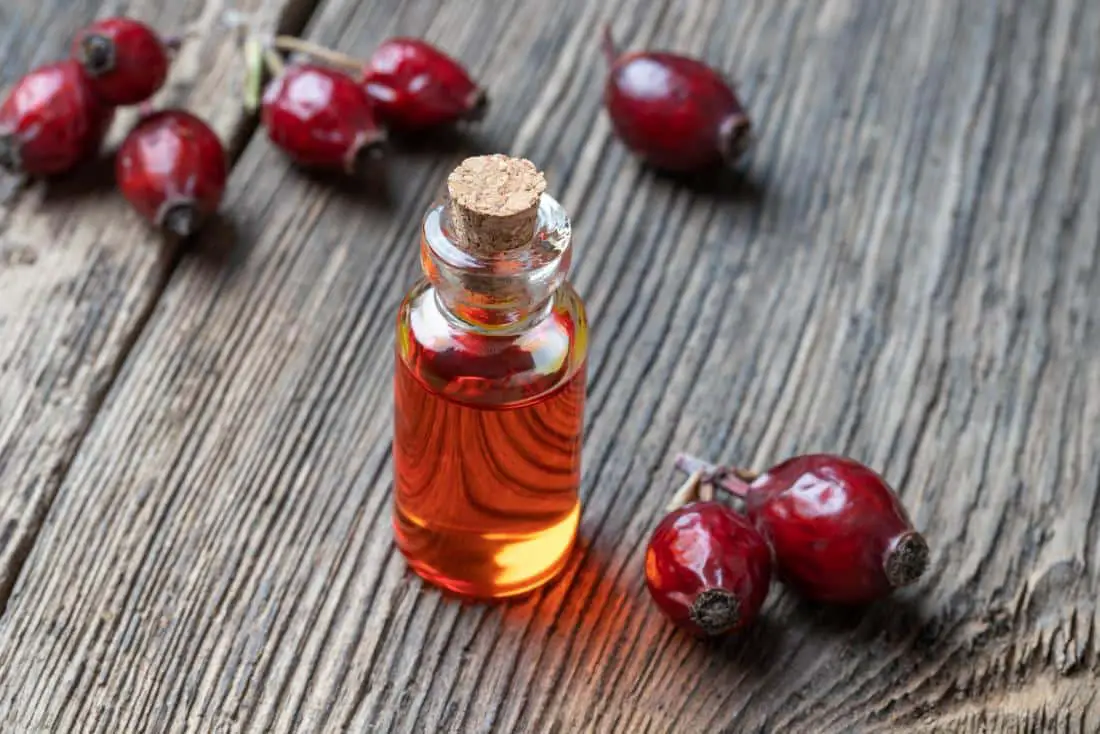Rosehip oil has been used for centuries to heal and rejuvenate the skin. It is a good idea to know how to tell if rosehip oil is rancid before you buy it so that you can make an informed decision about what type of rosehip oil product will work best for your needs.
This blog post discusses how to test rosehip seed oils and what signs indicate that the oils are no longer safe or effective for use on your skin.
What Are the Benefits of Rosehip Oil?
Rosehip is helpful in the following ways:
1. Reduce Scarring
Rosehip oil is rich in antioxidants that are necessary to fight off free radicals. Research has shown that this oil can help reduce the appearance of scars by either lightening or removing them entirely over time. However, this depends on how old they are and what you intend to use them for.
2. Heal Dry Skin
Rosehip oil is a natural source of omega fatty acids, which help to restore balance in your skin. This enables you to heal from injuries and relieves any irritation or inflammation present on the surface of your skin.
3. Reduces Fine Lines and Wrinkles
Rosehip oil is high in vitamin C, which helps in the stimulation of collagen production. This reduces the appearance of those pesky fine lines and wrinkles you see as you get older.
4. Improve Skin Tone
Rosehip oil can help to reduce redness and discoloration on the surface of your skin. This is beneficial to people suffering from acne, as it helps heal any scars from previous breakouts or blemishes.
5. Reduce Dark Circles
Rosehip oil is high in vitamin K, which has properties that help reduce swelling and darkness around the eyes.

Rosehip Oil
How To Tell if Rosehip Oil Is Rancid
The following are two ways to test your rosehip oil for maturity or if it has gone bad:
Method 1: Refractive Index Test
This method works by seeing how light passes through a drop of oil using an instrument called a refractometer. It involves placing one drop on the prism inside the machine, closing it tightly, and looking through where there should be no markings on top of your sample. Then look down into the device until you see readings below zero (0). If there are any visible lines within this space, your product may have gone rancid or not pure rosehip oil.
Method 2: Cold Test
This method is a bit complicated, but it can give you an accurate result within one minute if done correctly. Using the back of your hand, rub a small amount of the oil between your thumb and index finger. Then wait for about one minute to see if there is any tingling or burning sensation that occurs. If you feel anything, then it’s not pure rosehip oil, as this test works specifically because rancid oils will often give off a slight acidic scent before they are entirely spoiled.
Tips To Buying the Right Rosehip Seed Oil
1. Look for the Words Rosa Mosqueta
If you see this on a product, then it is almost undoubtedly pure rosehip oil. The plant was named after an 18th-century Spanish nun. She was the first to use it for its medicinal properties as a cure-all and treat many different conditions. So, feel confident that if it is good enough for her, it will also be great for your skin.
2. Check the Price
If it is significantly cheaper than other brands, then there may be something wrong with the product. Rosehip oil can cost anywhere from $25 to upwards of $60 for a single ounce, so if you see something more on the lower end, this could indicate that they are passing off another type of seed oil like rosehip or it has been diluted in some way.
3. Look for Dark Glass Packaging
Since rosehip oil is a type of seed oil that does not fare well from being exposed to light, this causes the constituents in the product to break down and become less effective over time. So, look for bottles that protect your oils from exposing themselves to unnecessary UV rays or even fluorescent bulbs if you have them near your skincare products at home.
4. Buy in Small Quantities
Although you might feel better buying a half-gallon of rosehip oil to save money, it is best for your skin if you stick with smaller sizes. Since oils are highly volatile, they can go rancid quickly when exposed to air or light frequently over time. Therefore, it’s advisable to buy the smallest size that will allow you to use up this precious product within three months before making another purchase.
5. Look for Freshness Dates
Rosehip oil can last anywhere from six to twelve months. But you must check the expiration date and ensure that there have not been any breaks in the cold chain. This means looking at where your product was bottled and when it was bottled and ensuring they have proper storage conditions before purchasing anything.
Rosehip Alternatives
1. Argan Oil
This is another type of seed oil that can help with healing scars, treating wrinkles, and improving skin elasticity. It comes from Morocco, which has a similar climate to where the rosehip plant grows in Chile.
2. Hemp Seed Oil
Hemp seed is another type of oil that can be used as a natural alternative to rosehip, but it has slightly different properties. It means that hemp seed oil might not have the same benefits for your skin as rosehip. It should only be used by people with knowledge of what they are looking for in a product. Before choosing this option, please do thorough research on it.
3. Tamanu Oil
Tamanu oil is another popular type of seed oil that comes from the South Pacific countries like Hawaii, Tahiti, and Fiji. It has similar properties to rosehip in terms of being an antioxidant-rich product with anti-inflammatory effects. It can therefore help heal scars or reduce redness when used regularly on your skin.
Takeaway
Using the above tips, you should find a rosehip oil that suits your skin and works for your specific needs. Just remember to look for dark glass packaging and a freshness date to ensure that you are getting the best product possible and helping to reduce your carbon footprint.
